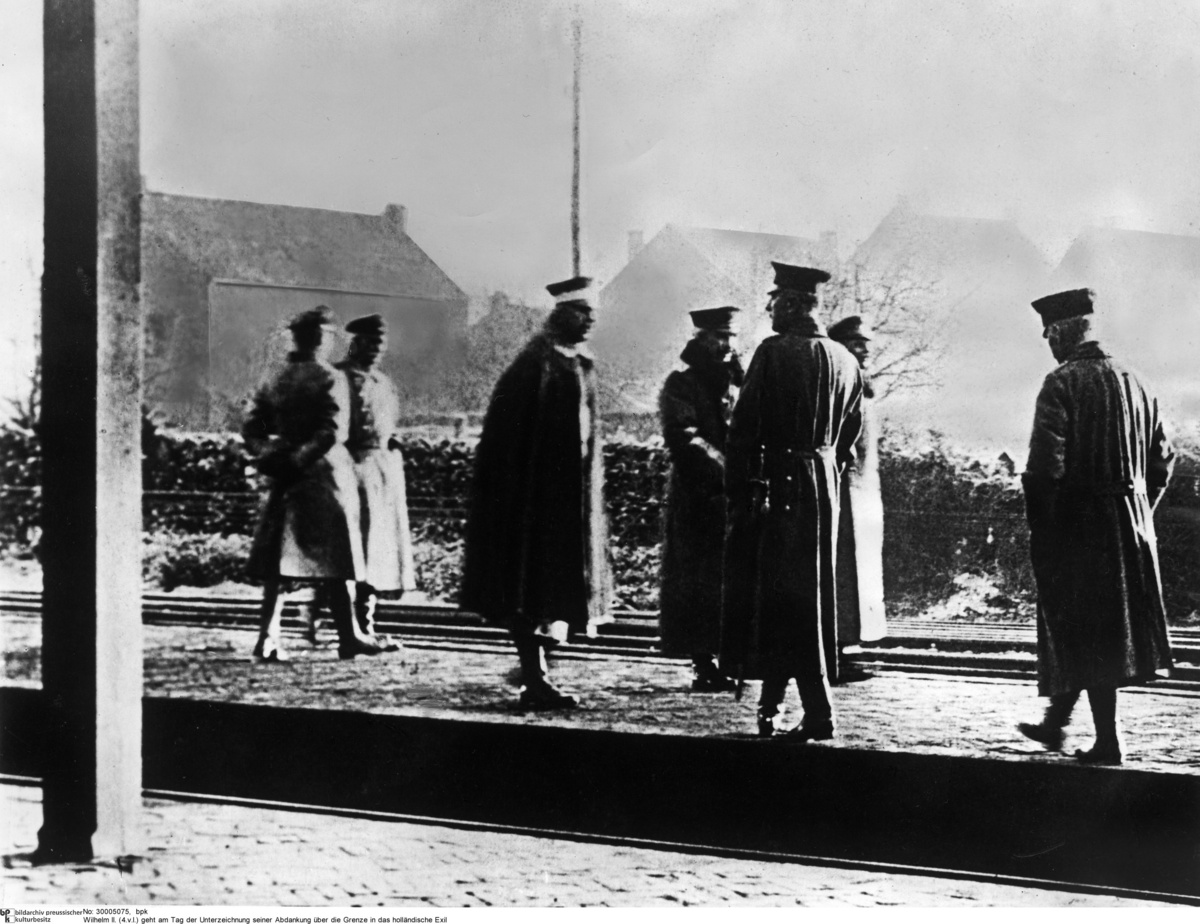Source

Source: bpk-Bildagentur, image number 30005075. For rights inquiries, please contact Art Resource at requests@artres.com (North America) or bpk-Bildagentur at kontakt@bpk-bildagentur.de (for all other countries).
During an exchange of notes between Germany and the United States on the subject of a ceasefire, it became clear that the Allies regarded the abdication of Wilhelm II as a prerequisite for the suspension of hostilities. Internally, the Social Democrats – who were now part of the parliamentary government under Reich Chancellor Max von Baden – demanded Wilhelm’s abdication. The chancellor himself, Foreign Minister Wilhelm Solf, and Quartermaster General Wilhelm Groener (Erich Ludendorff’s successor in the Supreme Army Command) also urged Wilhelm to abdicate. In late October 1918, Wilhelm defiantly withdrew to the army’s main headquarters in Spa, Belgium; he refused to accept the realities of the situation until the bitter end. Instead, he indulged in delusions: he thought of dying a hero’s death while leading his troops into battle or of giving up the title of Emperor and continuing his reign as King of Prussia “only.” Faced with a mass revolutionary movement and an ultimatum by Friedrich Ebert, Max von Baden took the liberty of announcing the Kaiser’s abdication on November 9, 1918. Wilhelm II was forced to go into exile in the Netherlands the next morning.
This photograph taken by an unknown Dutch student shows Wilhelm II (4th from the left) and his entourage waiting for the royal train at the station in the Dutch border town of Eijsden.

Source: bpk-Bildagentur, image number 30005075. For rights inquiries, please contact Art Resource at requests@artres.com (North America) or bpk-Bildagentur at kontakt@bpk-bildagentur.de (for all other countries).
bpk